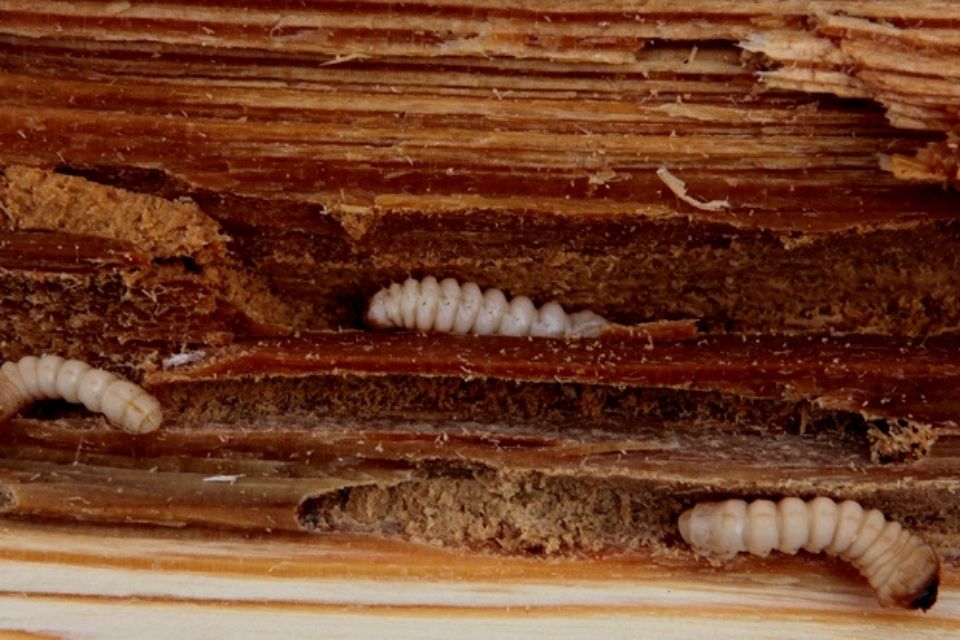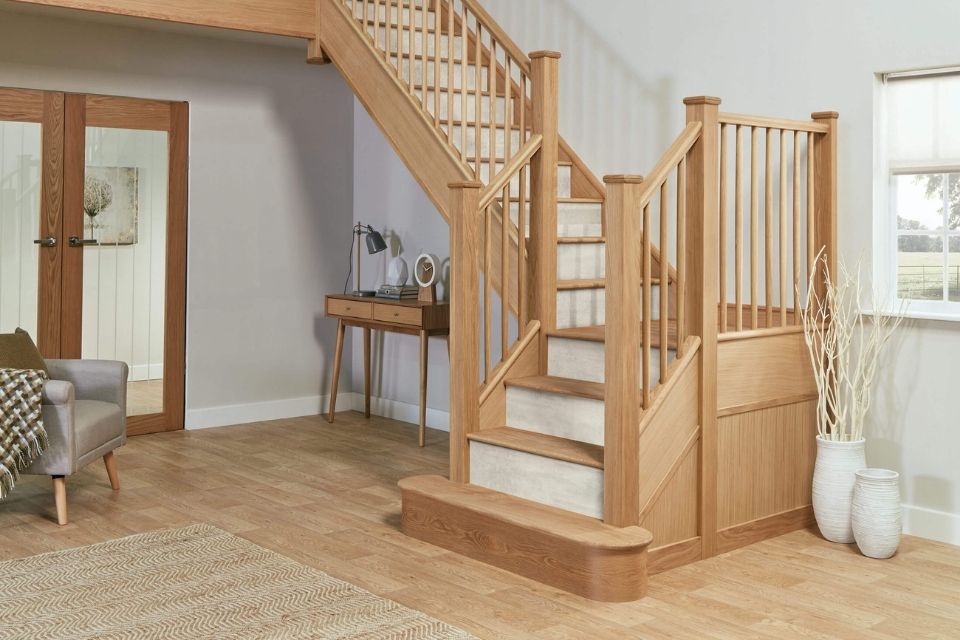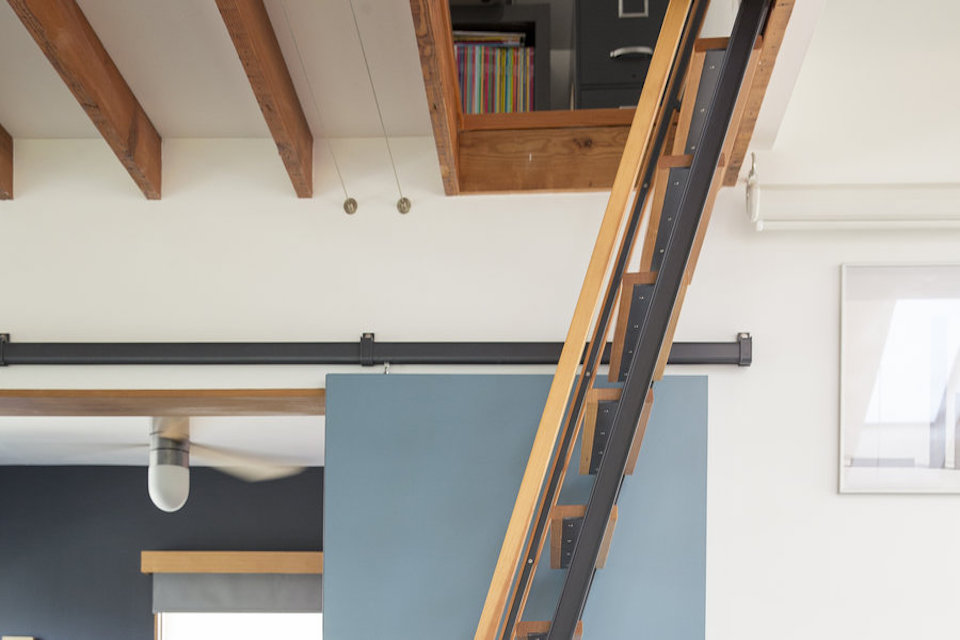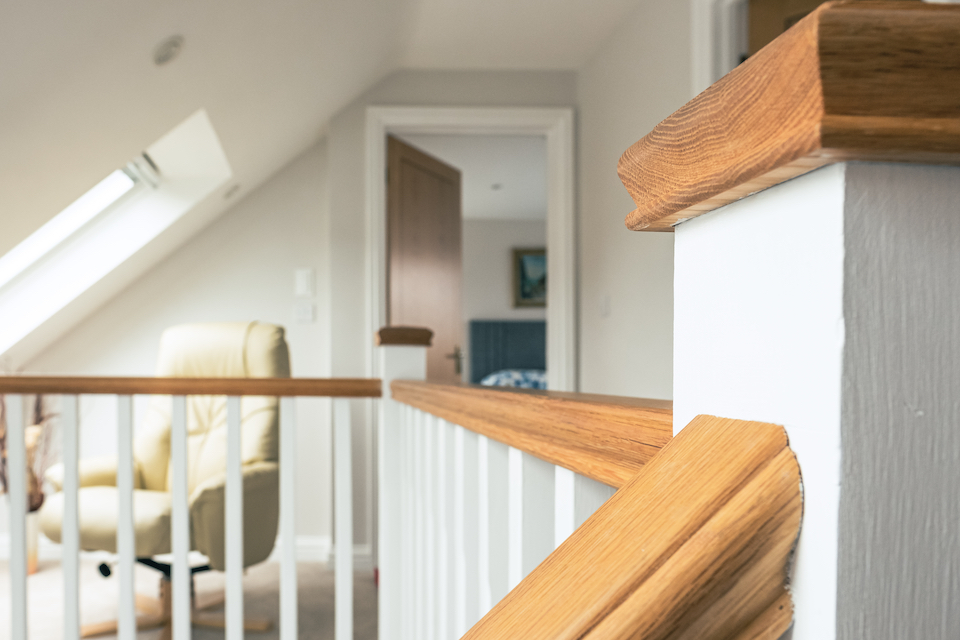How Much Does Woodworm Treatment Cost?
So, what is the average cost of treating woodworm?
The average cost of treating a whole property for every stage of woodworm is £280 to £420.
The consequences of a woodworm infestation can be immense, as it's not only your furniture at risk but any timber-based structure of your home too.
What about the woodworm survey cost?
A woodworm survey would put you back by about £100 to £200 and you’d to budget for £135 to £370 to treat furniture for woodworm.
But what can the the overall cost depend on?
Aside from the nature of the issue and treatment used, other cost factors are the extent of the damage, size/type of property (especially if a whole home treatment is taking place), number of tradespeople hired, ease of access, and where in the UK you are based.
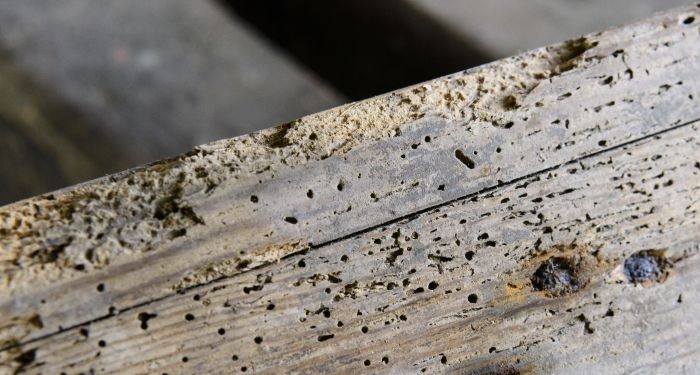
Spotted some signs of woodworm? If so, it's essential to eradicate them as quickly as possible.
The reason that location is important is because labourers charge different rates throughout the country based largely on the cost of living in the area.
What are the labour rates for different areas of the country?
Labour rates tend to be highest in the southeast (London in particular) but generally lower than the national average in the north of England, Scotland, and Northern Ireland.
Wood Worm Treatment Prices
| Job Description | Total Cost |
|---|---|
| Treat a Full Property for All Stages of Woodworm | £280 to £420 |
| Regular Woodworm Survey | £100 to £200 |
| Treat Furniture for Woodworm | £135 to £370 |
What are the Supply Costs of Woodworm Treatment?
In this section, we’ll look at what the material costs of woodworm treatment are. This is separate from the labour cost and is therefore particularly relevant if you plan on performing a woodworm treatment as a DIY job. The following costs may apply.
It costs £5 to £8 per litre to purchase wood treatment and £2 to £5 per litre for woodworm killer. You can expect supply costs of £18 to £20 per kg to buy boron powder or £13 to £15 per tube for boron paste.
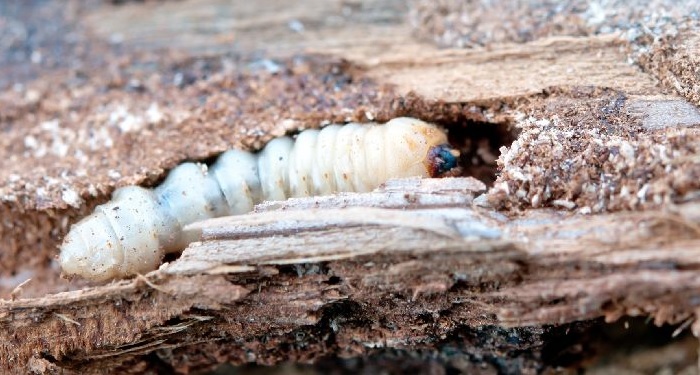
A woodworm spray may only cost £10 to £20 per unit. In most cases, to treat your home for each stage of woodworm would end up about £80 to £120.
If going about this work DIY, it’s important that you choose the best woodworm treatment.
Supply Costs of Woodworm Treatment
| Supply | Cost |
|---|---|
| Wood Treatment | £5 to £8 per litre |
| Woodworm Killer | £2 to £5 per litre |
| Boron Powder | £18 to £20 per kg |
| Boron Paste | £13 to £15 per tube |
| Woodworm Spray | £10 to £20 per unit |
What are the Additional Costs of Treating Woodworm Problems?
There are many added costs of treating woodworm that you should take into account before hiring a professional.
The following costs may or may not apply/prove relevant, depending on the nature of the job and other factors.
Minimum Fee
In certain cases, a minimum charge will apply when having a woodworm treatment. This may appear as an added expense to your total bill or as an expanded part of the existing bill.
An example of the latter point would be if you faced a daily labour cost. This may act essentially as an added minimum fee as a one day and three hour job would cost the same as a job lasting a day and seven hours.
Size/Type of Property
As you’d expect, the larger the property, the more a woodworm treatment job may cost. This would, however, only apply in specific cases, such as to treat your home for each stage of woodworm.
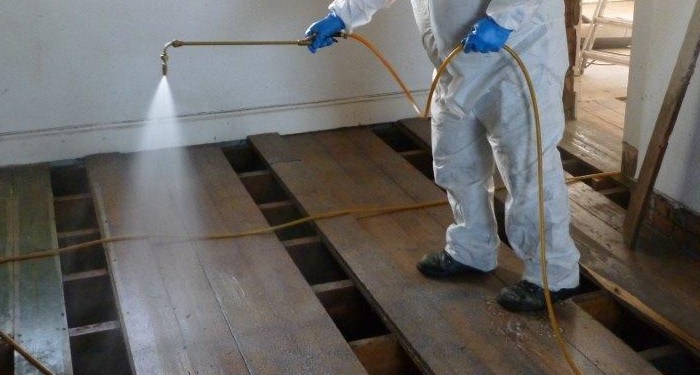
The type of property is relevant as such, given that property type is broadly linked to property size with the average detached home being larger than most semi-detached properties.
Type of Woodworm Problem/Treatment
Another notable cost factor is the type of treatment used. The most common methods are permethrin and boron. Both tend to have a similar cost but the product chosen and its quality in particular will be especially important.
Number of Tradespeople
The more labourers on the job, the higher the labour cost will be. If you have two contractors working for you, you’ll likely pay double the labour fee as you would for a single labourer.
However, the more professionals working on a job, the quicker the work will take. So whether increasing the number of tradespeople would bring up your total bill overall will depend on factors such as how well the labourers perform as a team.
Duration
Assuming that the labour cost is linked to duration, which it would be if it were charged per hour, then the longer the job lasts, the more you’ll pay at the end of the job.
In some cases, you’ll be charged per day of labour, in which case duration will only prove relevant to cost when the work crosses over into a new working day.
In other cases, labour will be charged as a set amount.
Tradesmen Costs for Woodworm Treatment
Let’s now take a closer look at what the labour costs of hiring a professional to treat woodworm. This excludes the supply costs.
On average, a specialist will charge £100 to £150 a day to undertake woodworm treatment. As for specific jobs, to have your entire home treated for all stages of woodworm, you’d face a labour cost of about £200 to £300.
The tradesmen cost would land around £25 to £75 for a regular woodworm survey, or £100 to £150 to treat furniture for woodworm.
The labour costs can vary depending on the number of tradespeople hired, ease of access, the duration of the work, and where in the UK you are located.
To find woodworm treatment prices for specialists in your area, try Googling ‘Woodworm treatment specialist near me’.
How Long Do Woodworm Treatments Take?
In this section, we’ll look at how long different woodworm treatment jobs would take. We’ll also discuss what factors can impact on the duration of these tasks.
To treat an entire property for every stage of woodworm will take about one to three days, depending on the size of the property.
A woodworm survey on the other hand, may take between two and four hours. As for treating furniture for woodworm, in most cases, this job would last roughly one working day.
Types of Woodworm
Despite their name, woodworms are in fact a variety of larva and beetles that consume wood.
There are many types of woodworm in the UK that could infest a property. In this section, we’ll take a look at some common examples.
Common Furniture Beetle
The common furniture beetle is the most prevalent woodworm beetle in the UK. This creature has a length of 2.7mm to 4.5mm. It features a brown ellipsoid-shaped body and a pronotum that offers the appearance of a monk cowl.
This beetle is known for targeting softwood in particular and tends to leave exit holes of about one to two millimetres in size.
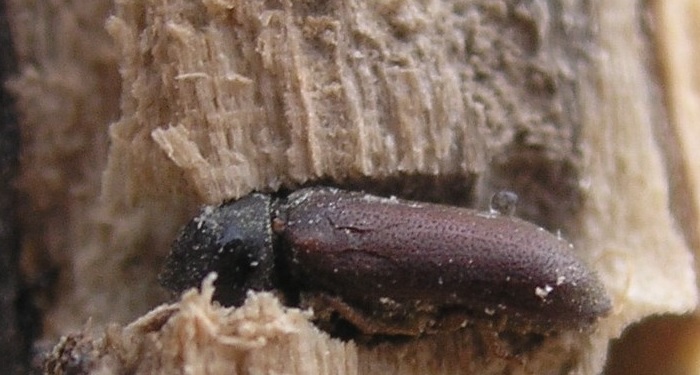
This woodworm will lay eggs on the timber before the grubs will start eating away. Damp wood is more prone to a common furniture beetle infestation than dry wood.
Plywood is especially vulnerable to being attacked by this type of woodworm. You’ll often find these beetles in damp loft timbers, damp flooring, old furniture that has seen its polish wear away.
Common Furniture Beetle Facts:
- Damp wood is particularly susceptible to these beetles
- These beetles are often found as woodworm in floorboards
- They are the most prevalent woodworm in the UK
Death Watch Beetle
This wood boring beetle has a length of about 7mm, though larvae can reach up to 11mm.
Evidence of these woodworms is a ticking or tapping sound that can sometimes be heard in archaic building rafters on quiet summer evenings, as this is the sound these beetles make to attract mates.
The name has superstitious origins as it was once believed that these beetles are meant to watch over the dead or dying.
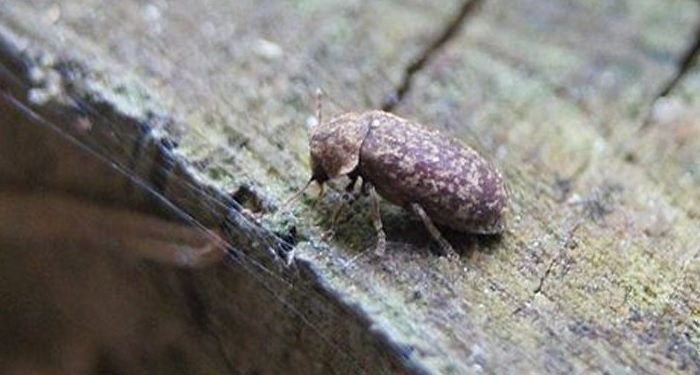
These beetles find particularly damp wood appealing. Wet rot can allow death watch beetles to develop fast.
Thankfully these woodworms are not very common in the UK but for the numbers that are here, they’ll mostly be found in the south and midlands of England.
Death Watch Beetle Facts:
- Can be noisy
- Wet rot can be worsened by a death watch beetle infestation
- These beetles appear in strong numbers in certain parts of England
Powderpost Beetle
You’re more likely to find a powderpost beetle in timber that features sufficient starch and pores sizeable enough to let female beetles lay eggs.
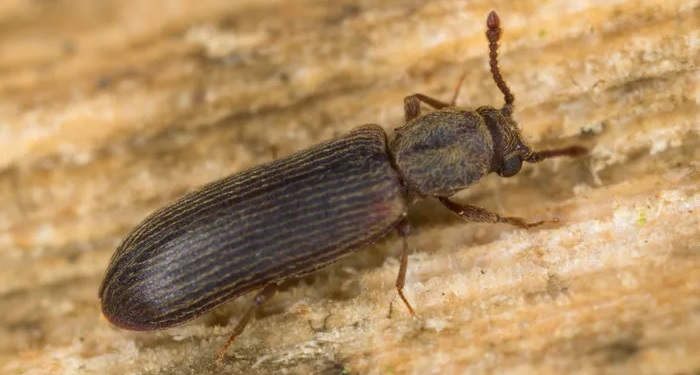
These woodworms are particularly small and range in size from 1-7mm. Their colours vary from black to reddish brown.
Their larvae often bore through season wood like elm, ash, and oak. You won’t find them in wood that is treated, painted, or varnished, however.
Powderpost Beetle Facts:
- Season wood is vulnerable to a powderpost beetle infestation
- Harder to spot due to size
- May blend in with the colour of wooden surfaces/fittings
Types of Woodworm Treatments
There are two primary approaches to treating woodworm. Let’s take a look at primary approaches to treating woodworm.
Boron Treatment
One of the most prevalent ways of treating woodworm is with the use of boron materials. This biocide often comes in bags weighing from half a kilogram to several.
As with any biocide, these materials can be dangerous. The average cost of boron is £18 to £20 per kg or £13 to £15 per tube, depending on which form you buy it in.
Pros:
- Most common
- Cheaper
Cons:
- Can be dangerous
Permethrin Treatment
The other common way of treating woodworm is with permethrin-based products. This approach is most often used to combat common furniture beetles but it can be used in other cases too.
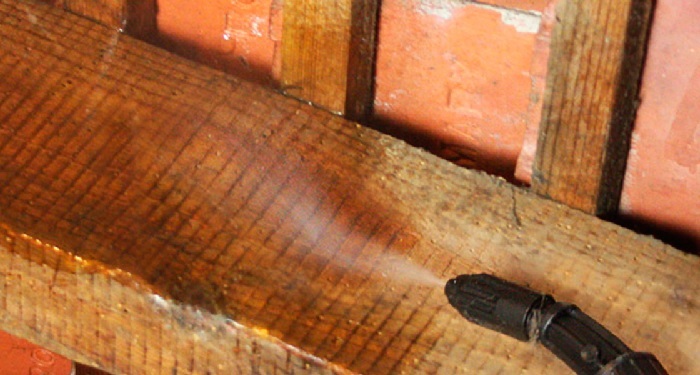
You can generally purchase permethrin products for £55 to £60 per kg or £27 to £32 per litre. It is the more expensive of the two.
Likewise, permethrin can be harmful so be cautious when using it. In fact, it’s generally deemed more dangerous than boron.
Pros:
- May be more effective
Cons:
- Potentially more dangerous
- Not as affordable as boron products
FAQs
Q: What does a woodworm look like?
A: Woodworms are tiny creates just several millimetres in length. The best way of actually spotting them is by seeing the evidence they leave behind in the form of exit holes on a timber surface.
Q: How can I tell if a woodworm is active?
A: To check if woodworms are alive in/on a timber surface, look out for frass (woodworm droppings). It has an appearance resembling fine sawdust and will most open appear about the edges of the exit holes.
Q: How long until a product will kill woodworms?
A: It should take one day, possibly two.
Q: How can I prevent a woodworm infestation?
A: One of the best ways to avoid this issue is by keeping moisture levels low. In addition, you should make sure that wood remains dry and ventilated sufficiently.
Q: What is the life cycle of a woodworm?
A: The woodworm life cycle lasts for about two to five years. To start with larvae hatch, eat through wood and then re-appear as grown beetles. They mate, lay eggs, and then eventually die with the recycle repeating.

